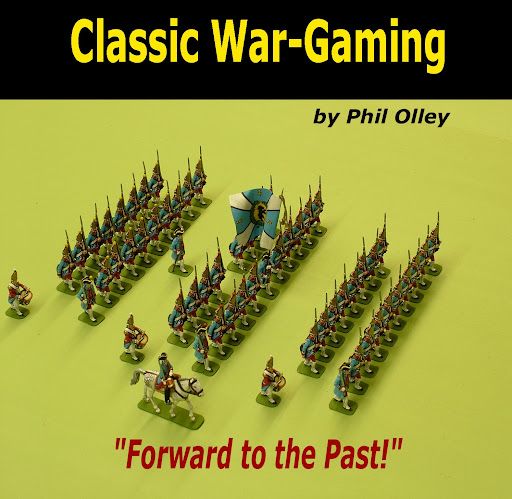Cavalry were the most problematic arm to decide on as the figures photographed in Charge do not appear to be available any longer. So I had to make some compromises here, still capturing the essential Classic look. I confess to feeling that the Stadden horses are rather large for my tastes (albeit they are actually properly proportioned). And in Charge, other than some of the Staff Officers, I’m not sure any of the Cavalry are Stadden figures. In fact I’m pretty sure they're not, and the cavalry depicted look rather smaller than the Stadden infantry, so I decided to begin with a regiment of Holger Erikkson figures.
So, first up… The Marchmont Dragoons, which are as close in terms of pose as I can get to the cavalry regiment shown in the book.

above: The Marchmont Dragoons
Note: extra officer included to bring the organisation up to 30 all ranks. It seems far neater to have each squadron having an individual officer, and the Regimental standard accompanying the CO and Trumpeter.
and below, in Black and White for those who prefer.

A word of warning, however; these figure castings are no longer in the best state, and in reality do not represent value for money. They are very fragile at the legs, and require a lot of cleaning up. The detail is not very clear, making painting less than enjoyable, so I resolved to apply a very basic style to simply enjoy the finished spectacle.
For variety, my next cavalry regiment will be something different, and will be shown here in due course.
And, onto
Light Infantry, The Garde Jaeger:


Above: The Garde Jaeger, Light Infantry company.
These are a copy of the figures used in Charge for the unit of the same name, being of course Napoleonic Russian Pavlov Grenadiers! Again, if this seems anomalous to you, and you wish to create light infantry more consistent with a specific army or time period, for example by creating some genuine Grenzers or Jagers for the mid 18th century, there is no shortage of such figures. You may even wish to incorporate a company of The Black Watch, or The Arquebusiers de Grassin. The choice is yours.
As I indicated previously, I felt that in Charge the Light Infantry were too powerful for my tastes (my preference being more 18th century than Napoleonic), and particularly when operating 4 company mixed regiments of the Line, where one of the companies is a Light Company. This would put too many light infantry on the table for me, and probably prevent players adopting linear tactics, and edging more towards a Napoleonic style game. I therefore decided to field my Light Infantry in individual companies, rather than as the 2-company battalions shown in the book (although I may also use the full 2-company regiments when suited to a specific scenario). To further diminish the impact of the Light Infantry, I may also limit their operations and firepower within the rules, but this is again a purely personal preference reflecting my desire to have my Light Infantry as a “nuisance arm” rather than “battle winners!”.

and for comparison, here are the relevant plates from "Charge!"
Note the plate showing a “regiment of light infantry” appears actually to be two separate companies of Light Infantry (note one half have dark gaiters- these I believe to be one company of the Garde Jaeger LI regt- and one half have white gaiters, and I suspect the latter is the Light Company of the Erbprinz Regt as it comprises 16 privates, reflecting the organisation of Light companies of Line regts in the book).
More next time.















